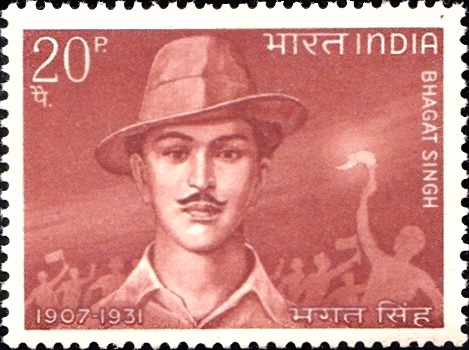
Bhagat Singh
A commemorative postage stamp on Shahid Vagat Singh, an Indian revolutionary, founder of Hindustan Socialist Republican Association (HSRA) :
 Issued by India
Issued by India
Issued on Oct 19, 1968
Issued for : Bhagat Singh is dead but his martyrdom in the cause of the country’s liberation will be ever remembered. The Posts and Telegraphs Department feels privileged to issue a special postage stamp in honour of this great patriot.
Description of Design : The design of the stamp is horizontal and depicts portrait of Bhagat Singh in the silhouette background of procession of freedom fighters.
Type : Stamp, Mint Condition
Colour : Mineral Red
Denomination : 20 Paise
Overall Size : 3.91 X 2.90 cms.
Printing Size : 3.56 X 2.54 cms.
Perforation : 13 x 13
Watermark : Printed on unwatermarked paper
Number Printed : 20,00,000
Number per issue Sheet : 35
Printing Process : Photogravure
Designed and Printed at : India Security Press
Name : Bhagat Singh
Born on Sep 27, 1907 at Jaranwala Tehsil, Faisalabad, Punjab, British India [now in Pakistan]
Died on Mar 23, 1931 at Lahore, Punjab, British India [now in Pakistan]
About :
- Long Live Revolution
Down with Imperialism !
As two bombs hurtled down from the visitors’ gallery to the floor of the Assembly Hall in Delhi on an April day of 1929, two youths started shouting their protests against the humiliation of their country by a foreign government. They declared that their object was to secure equal freedom for all and to end all exploitation. The two young men were Bhagat Singh and Batukeshwar Datta, members of the Hindustan Socialist Republican Army. Their daring action took the country by storm and shook the prestige of the mighty British Empire. - Bhagat Singh was born in 1907 in a Sikh family. His father and uncles had participated in the freedom movement and suffered for it. Bhagat Singh’s revolutionary career may be said to have begun when he was still in his teens. While in college, he came under the influence of Bhai Paramananda and Jaychandra Vidyalankar made an exhaustive study of history, economics and politics. Works on the French Revolution, the American Revolution and the Italian Revolution were studied by him with passion. His imagination was thus fired with a longing to strive for the liberation of his motherland. Along with a few daring comrades from the Punjab, U.P., Bihar and Bengal, Bhagat Singh formed in 1928 the Hindustan Socialist Republican Army, which would devote itself to revolutionary acts against the foreign bureaucracy.
- An All-British Commission had been appointed about this time to study the constitutional problem of India. The exclusion of Indians from the Commission was much resented all over the country and wherever it went, it was boycotted and received with black flags. One such demonstration occurred at Lahore on 30th October, 1928. Lala Lajpat Rai, the respected leader of the Punjab was leading a peaceful demonstration. The Government was however determined to make a show of strength. The magistrate ordered a lathi charge to disperse the crowd. A police officer struck Lala Lajpat Rai on the chest and as a result of the shock, the old lion of the Punjab died within a month (17th November, 1928).
- Such a dastardly act was bound to lead to retaliation. The Hindustan Socialist Republican Army group took it upon itself to avenge the death of their revered leader. On the 17th December, 1928, an Assistant Superintendent of Police, Saunders, was attacked in broad day light as he was leaving his office and killed on the spot. The attackers, chief among whom was Bhagat Singh, made good their escape. On the next day all over the city of Lahore appeared posters explaining why the attack was made.
- The group struck next on 8th April, 1929 at Delhi. Bhagat Singh and his comrade Datta threw bombs in the Assembly Hall. They allowed themselves to be arrested and when arraigned before the Magistrate told him
“Our sole purpose was to make the deaf hear and to give the headless a timely warning as we keenly feel that from under the seeming stillness of the sea of Indian humanity a veritable storm is about to break out. We have only hoisted the danger signal to warn those who are speeding along without heeding the grave danger ahead”. - Bhagat Singh and his comrades of the Socialist Republican Army were put on trial on 10th July, 1930 and after protracted hearings, were sentenced to punishments varying from death to imprisonment. Bhagat Singh was hanged on the 23rd March, 1931.


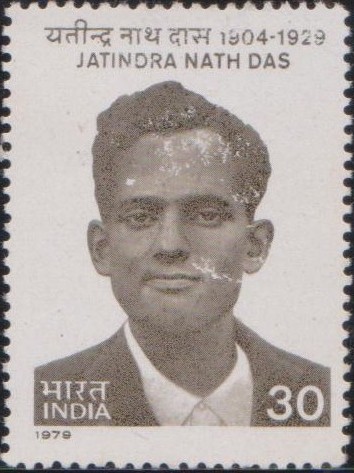
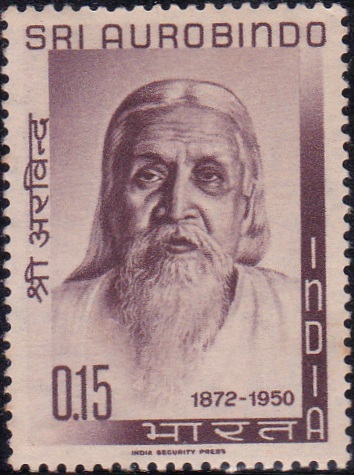
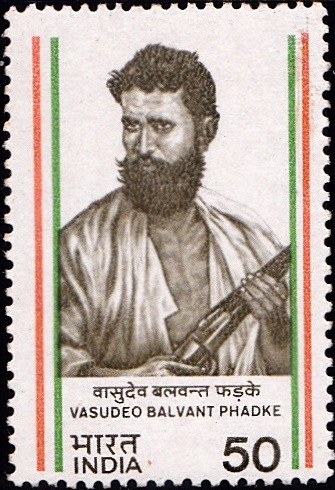
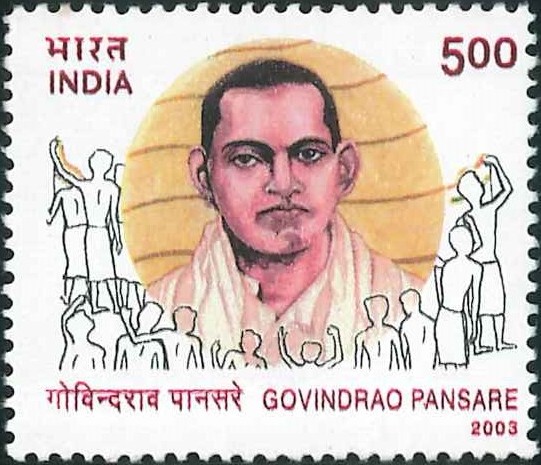
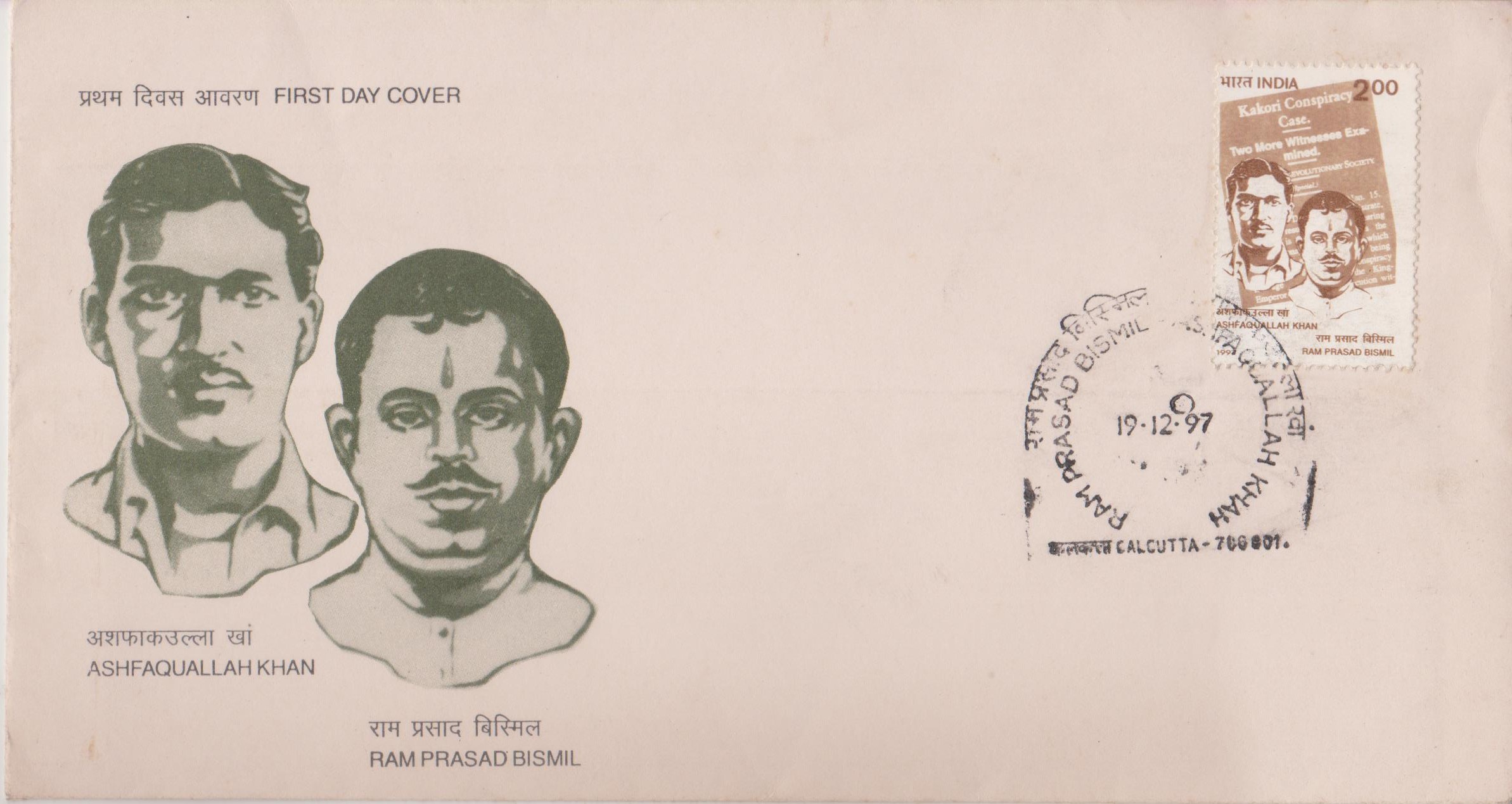
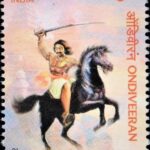
I like your website tooooooo much.
It helped me by showing all information about freedom fighters.
[…] to fight British Imperialism. There was another form of protest, that of the revolutionaries like Bhagat Singh, Chandra Sekhar Azad, Sukhdev, Rajguru, and later this stream was led by Subhas Chandra […]
[…] of History and Chairman, Board of Education, in which capacities he served honorarily till the end. Bhagat Singh and others were his students […]
[…] On the 50th anniversary of the martyrdom of Bhagat Singh, Raj Guru, Sukhdev, Chandra Shekhar Azad, Hari Kishan and Mallapa Dhanashetti, Indian P & T […]
[…] Bahadur was influenced by Shaheed Bhagat Singh during his college days. However, he chose to follow the ideals of Mahatma Gandhi later and […]
[…] complexion of our drive to freedom, the paper followed his every step. The valiant struggle of Bhagat Singh, Rajguru and Sukhdev in 1931 found its place in the columns of this newspaper with the heroic […]
[…] on 7th October, 1930 the decision came sealing the fate of Rajguru and fellow revolutionaries. Bhagat Singh, Sukhdev and Rajguru were awarded death sentence while seven others were given life imprisonment. […]
[…] Satyagraha in 1930. He was arrested and sent to Kanpur where he got inspired by historic stories of Bhagat Singh, Sukh Dev, Rajguru. He and about 600 political prisoners then at Kanpur were released after the […]